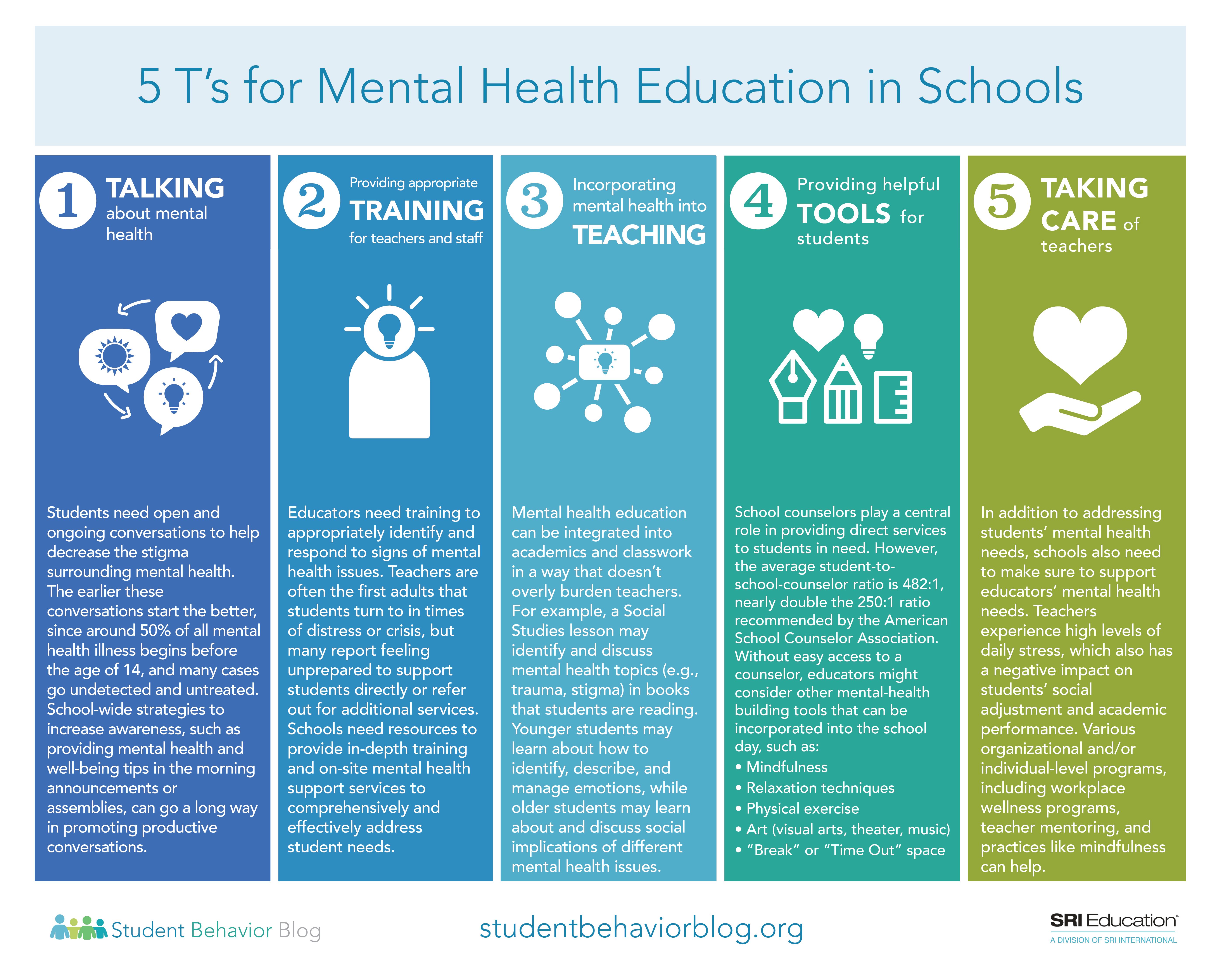The mental health crisis in schools has reached a breaking point. National data shows suicide as the second leading cause of death among young people. Five youths under the age of 20 take their own lives each day. The reality paints an even darker picture – one in six adolescents lives with a mental health condition. More than 60% of students cannot access the services and treatment they need.
Schools don’t deal very well with these pressing needs. Indiana ranks 45th among all states for its student-to-counselor ratio. Each counselor serves about 620 students. Yet hope exists through well-laid-out support systems. Student Assistance Programs help create safe and supportive environments. These programs connect students with caring adults and encourage positive peer relationships. Schools that actively promote student mental health show better classroom behavior, increased engagement, and stronger peer bonds. This piece explores how these programs work and why they have become vital parts of our education system.
What Student Assistance Programs Are and Why They Matter

Image Source: Student Behavior Blog
Student Assistance Programs (SAPs) are a vital part of today’s educational ecosystem. These programs evolved from Employee Assistance Programs of the 1960s-70s. SAPs took shape in the 1980s to help remove barriers that stopped students from learning effectively. They go beyond regular academic support by helping students with non-academic challenges.
Public schools across the country have embraced mental health services, with 97% now offering some form of support. Students can access individual-based interventions (84%), case management (70%), and get referrals to outside help (67%). One in five students now employs these important services.
These programs help students deal with depression, anxiety, substance use, trauma, grief, family problems, and school adjustment issues. Research shows that 40% of high school students experience persistent feelings of sadness or hopelessness. SAPs work to fill this gap in student support.
Research proves that SAPs work well. Students who join substance use prevention programs see their grades improve significantly. On top of that, two-thirds of students who use SAP services manage to keep good attendance. The data shows 60% avoid further suspensions, while 68% either move up a grade or graduate.
SAPs build safe spaces where students connect with their peers and teachers. They learn life skills that help them succeed.
Core Components of Effective Student Assistance Programs
Image Source: Tupelo Public School District
Nine critical components form the foundation of successful Student Assistance Programs (SAPs). These components create a complete framework that addresses mental health in schools. Research shows these elements must work together to help students overcome learning barriers.
A well-defined school board policy establishes the program’s role in creating safe learning environments and sets confidentiality guidelines. Regular staff development gives teachers the skills to spot students who need help and understand what prevents them from learning.
Students who show warning signs like falling grades, frequent absences, or disruptive behaviors can get help through the internal referral process. A specialized problem-solving team manages cases and connects students with the right support systems.
Support groups, mentors, and school-sponsored programs make up the direct services. Data confirms these services help reduce problem behaviors. Schools need mutually beneficial alliances with community partners, and 57% of schools work with external mental health providers.
A study of Pennsylvania’s SAP program, which included 1,204 team members from 154 schools, validated this complete approach. Schools that followed these standards saw better communication between staff, students, and parents. Students also developed stronger connections with positive adult role models.
SAPs use these connected components to build systems that remove learning barriers and support students’ mental health needs effectively.
Implementing SAPs Within a Multi-Tiered Support Framework
Image Source: Oregon.gov
Student Assistance Programs work best with an organized approach. The Multi-Tiered System of Supports (MTSS) framework serves as a perfect integration point that organizes services across three levels of intensity based on student needs.
SAPs deliver school-wide prevention efforts at Tier 1 (universal) level to reach all students. This typically meets about 80% of student needs through high-quality academic, social, emotional, and behavioral support. Students showing early signs of problems receive small group interventions at Tier 2 (targeted), which helps approximately 10-15% of students. The Tier 3 (intensive) level provides individualized, intensive support to roughly 1-5% of students with persistent needs.
These tiers need strong coordination between them. Research shows 76% of schools that provided mental health services had two or more types of mental health providers in 2024-2025. Clear protocols around confidentiality become vital. Professionals must follow ethical standards and provide families with at least three appropriate options while referring to outside services.
Schools that use universal behavioral health screenings identify students with needs better, though only one-third currently provide these services. SAPs help fill implementation gaps especially at Tiers 2 and 3 where schools face the most challenges. These programs connect students to appropriate resources at exactly the right level of support through integrated information sharing and coordinated care.
Conclusion
Student Assistance Programs play a key role in our schools. They help tackle the mental health crisis that impacts our youth today. These programs started as workplace models and grew into complete systems. They break down learning barriers and boost students’ mental health. The results speak for themselves – students get better grades, show up more often, and more of them graduate.
SAPs create spaces where students build strong bonds with their peers and teachers. Students also pick up life skills they’ll need later. The nine core parts of these programs work as one system. This helps find students who need help and connects them with the right resources. On top of that, the Multi-Tiered System of Supports gives schools a well-laid-out plan. Schools can use this to help students at every level – from basic support to intensive care.
Schools don’t deal very well with mental health needs right now. The number of students per counselor shows this problem clearly. All the same, SAPs give us hope. They set up clear steps, build strategic collaborations, and manage care at different levels. With one in six adolescents living with mental health conditions, these programs aren’t just helpful – they’re crucial parts of how we teach.
Moving forward means putting more resources into these support systems. Schools that make student mental health a priority see real changes. Students behave better in class, get more involved, and build stronger relationships. Student Assistance Programs stand out as one of our best tools. They create learning spaces where all students can succeed, even when facing mental health challenges.
Key Takeaways
Student Assistance Programs (SAPs) provide essential mental health support in schools, addressing the crisis where 1 in 6 adolescents lives with a mental health condition and suicide remains the second leading cause of death among youth.
• SAPs significantly improve student outcomes: Students show better grades, attendance, and graduation rates, with 68% promoted or graduated from high school after receiving services.
• Multi-tiered support maximizes effectiveness: Programs work across three levels – universal prevention (80% of students), targeted interventions (10-15%), and intensive support (1-5%).
• Nine core components ensure program success: Effective SAPs require school board policy, staff training, referral systems, case management, direct services, and community partnerships working together.
• Early identification and intervention are crucial: Schools with structured screening and referral processes better connect struggling students to appropriate mental health resources before problems escalate.
• Community partnerships expand access to care: 57% of schools partner with external mental health providers, helping address the shortage of school counselors (1 per 620 students in some states).
SAPs represent a proven, systematic approach to creating safe learning environments where students can thrive academically and emotionally, making them essential components of modern education systems.
FAQs
Q1. What are Student Assistance Programs (SAPs) and how do they support mental health in schools? Student Assistance Programs are comprehensive frameworks that address non-academic challenges impeding student success. They provide mental health services, substance use prevention, and interventions to create safe and supportive environments, connecting students with caring adults and fostering positive peer relationships.
Q2. How effective are Student Assistance Programs in improving student outcomes? SAPs have shown significant effectiveness. Students participating in these programs have demonstrated improvements in grade point averages, school attendance, and graduation rates. Specifically, two-thirds of students receiving SAP services improved or maintained regular school attendance, and 68% were promoted or graduated from high school.
Q3. What are the core components of an effective Student Assistance Program? Effective SAPs consist of nine critical components, including clear school board policies, ongoing staff development, internal referral processes, case management, direct services, and collaboration with community partners. These components work together to create a comprehensive system for addressing students’ mental health needs.
Q4. How are Student Assistance Programs implemented within schools? SAPs are typically implemented within a Multi-Tiered System of Supports (MTSS) framework. This approach organizes services across three levels: universal prevention for all students (Tier 1), targeted interventions for at-risk students (Tier 2), and intensive support for students with persistent needs (Tier 3).
Q5. Why are Student Assistance Programs becoming essential in the education system? SAPs are becoming essential due to the alarming mental health crisis among young people. With one in six adolescents living with a mental health condition and suicide being the second leading cause of death among youth, these programs fill a crucial gap in educational support by addressing mental health needs and removing barriers to learning.


Leave a Reply